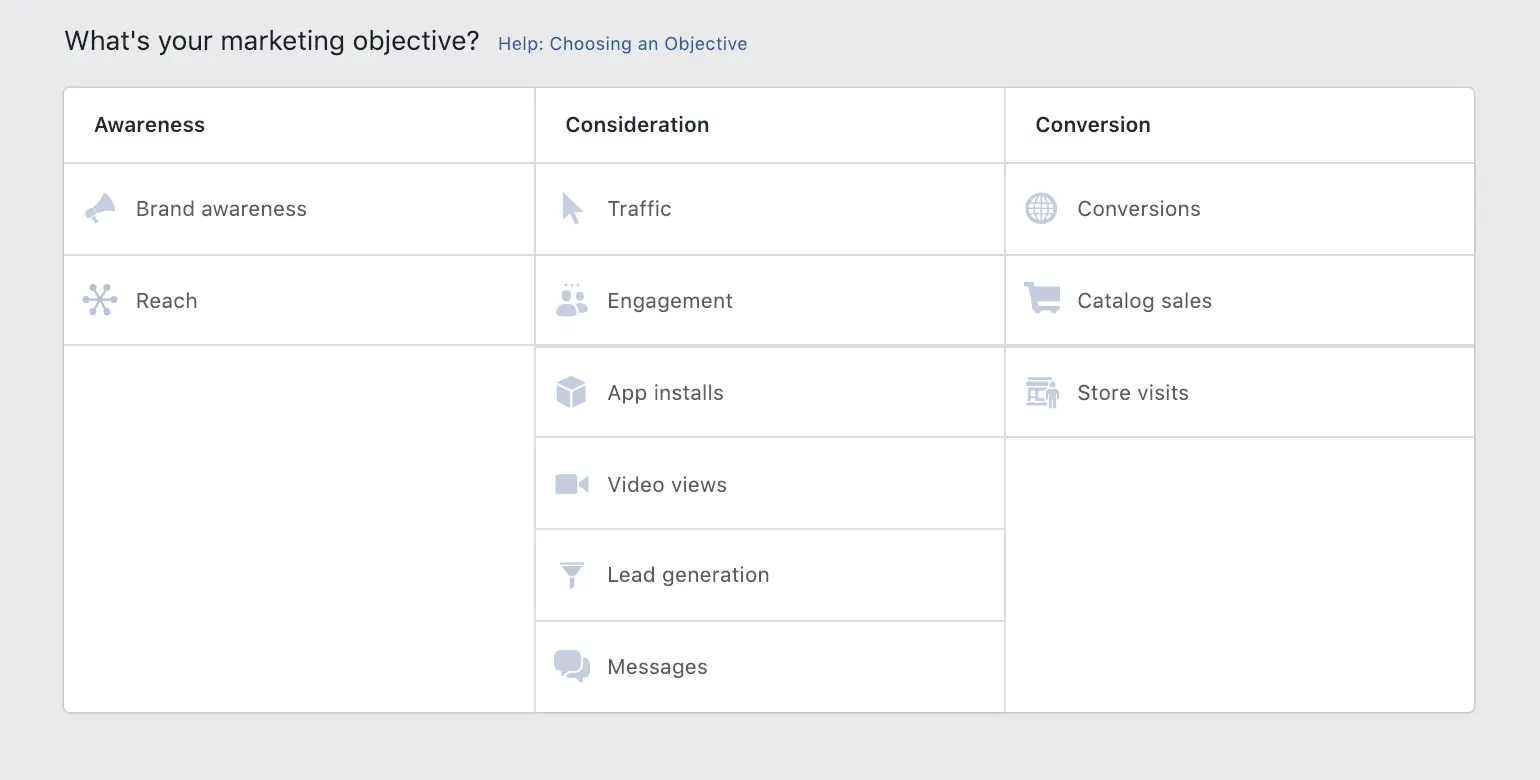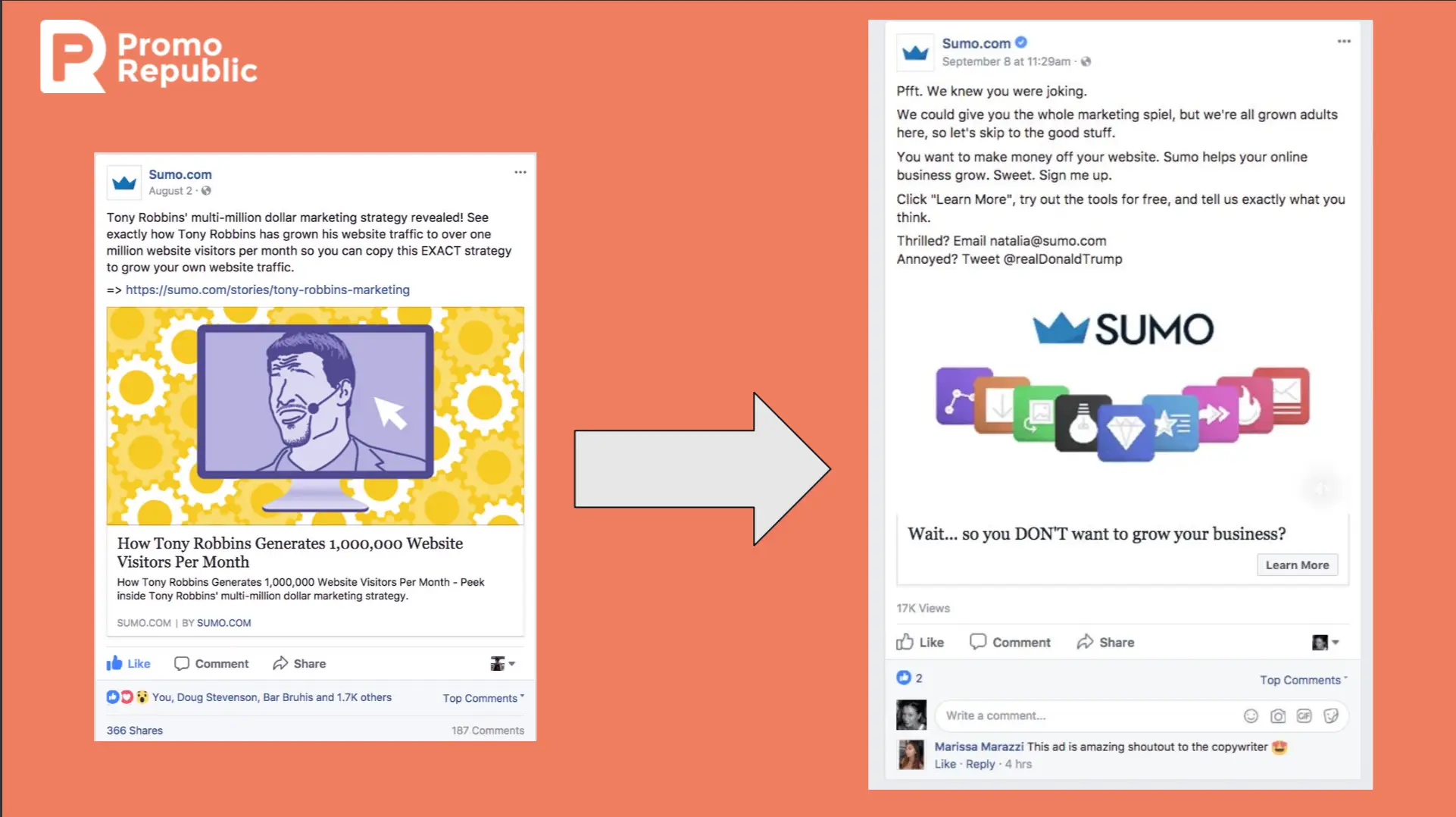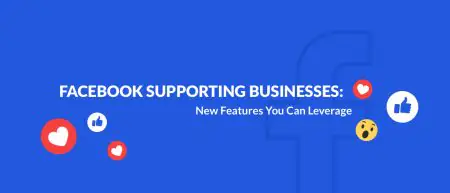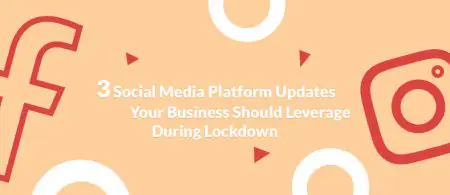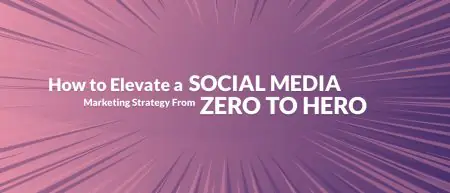How to Create a Catching Facebook Ad
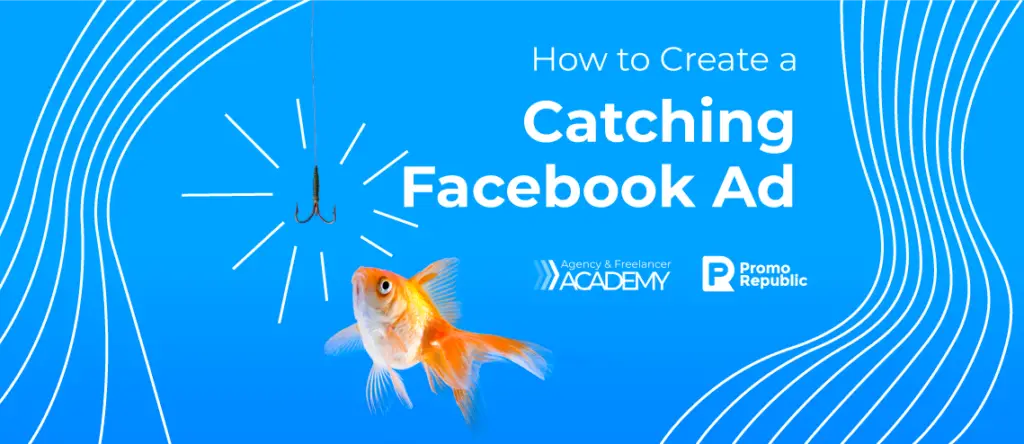
Content Marketing Manager
A good ad can perk the interest in your client’s product or services while a mediocre ad can have the very opposite feeling happen. There are some pretty solid arguments for you to get a handle of that one more time.
Statistics speak louder than words. Now, on average, an American sees approximately 6,000 advertising messages per day. For European eyes, this number is about 4,000.
All this because of the peculiarity of human nature. Our brain has adapted with the bunch of information storming the mind every second. The brain doesn’t respond to facts. The brain doesn’t remember and doesn’t scan 99% of the information your eyes can see. People hardly ever can recall one or two advertisements seen in the last few days, week, month. Per The Telegraph, if we imagine the amount of information we receive in 24 hours, it would be enough to fill 174 newspapers.
These numbers prove that your ad can be easily lost in the torrent of never-ending information showering from every angle. In order to avoid this pity outcome of events, it’s quite logical to master Facebook targeting strategy which will help to reach out the specific segments of your audience.
Let’s dig down deeper. The already difficult ad-situation becomes even more difficult by the fact that the advertising icon automatically gives our brain the signal to block the ad — sad, but true. Your services or product can go unnoticed not because they are bad, but because people can’t get enough information on how you can help them. It usually happens because today’s world is divided into good and bad marketers. The first one thinks that attention of every person can be bought. The second ones know that’s not it at all.
“The attention has to be earned”
What is a good ad made of
First off, the good ad tells the story and shows the benefit the viewer can get. For years, a foolproof method of achieving this goal has been storytelling. To top it all of, it doesn’t make any sense of what you are going to sell — any product or service can be conveyed as something worth attention.
So, if you want your audience to understand the idea of the ad, the value you suggest, and you want your ad to carry out its main function — selling and building awareness — then the character driving it should be motivated to do so.
Struggling to create catching visuals for your Facebook ads?
With PromoRepublic, you can get 100,000+ ready-to-use templates, save, edit or create them from scratch.
Give PromoRepublic a try and sign up for free!
Secondly, the type of visual you choose defines your success. There are two main types of visuals: animated and non-animated. According to AdEspresso research, regular still images work better than animated images. They set up a 21-day Facebook Facebook Lead campaign to get new leads and enter them to their email campaign. As a result, ads with still images had the average CPC of $0.52 while ads with an animated image had the CPC of $0.78.
By contrast, WireBuzz argues that brands giving preference to videos on Facebook reach a higher percentage of their audience with each post.
All that is puzzling. Is it context that matters not format or visa versa? Let’s try to figure everything out.
In the case of non-animated format, the power is in the wording. Which means motive is irresistible part of your ad, and the reason why is hidden in basic human needs. People need the why for everything, it’s all because of our rational nature.
Basically, you should think of wording as a sword which will help you be a hero, for your potential client, to beat the odds.
All you need is to create a visual which answer the question:
- Who is the hero?
- What does the hero want?
- What should the hero do to get the desirable thing or achieve the goal?
- What was waiting for the hero at the end?
The answer to these questions will change depending on the product or services. However, not only your brand can be a hero, but the customer. Such a scenario creates the effect of the identity and makes more impact than an ordinary promotional visual.
According to Facebook, “shorter videos get more complete views.” So when it comes to animated format it’s good to keep in mind that a fifteen-second video ad is going to be viewed to completion far more often than some minute-plus piece of creativity.
Again, nobody goes to Facebook to get marketed to. People want to connect with friends and family, get engaged, read some news, or just kill the time. Therefore flashy messages evoke nothing but severe irritation.
Grammarly knows how branding without spamming can be. Most of their ads are based on the stories of the principle of the user-narrative.
Let’s analyze what’s so special about the video below. You can be sure there are no magic, no spells, no 25th frame effect.
The hero is an owner of Breakthrough Sushi, he tells the story about cooking master classes. When he talks about his students his eyes are sparkling and the corners of the mouth relax into a smile. What he is dreaming about is sharing the stories about first roll of the students, the art of making sushi, and the secrets standing behind it. Grammarly helps in polishing up these stories. The video finishes off with a message “write the future.”
That’s why it works here. The ad is about a human, not a new feature. It’s done in such a natural way that the product looks like the icing on the cake.
If you want to create something similar, think of the message you want to transmit. Does this message meet the why-need of your future client? Remember about the hero. The goal is what the hero wants while the motive is why the hero wants something. And the motive is the universal constant which rarely can be changed since it’s linked to the values and beliefs the hero has. In other words, the motive explains why someone has to be willing to buy the product or services.
“No motive. No conflict. No conflict. No story”
But such things don’t happen in an instant. When it comes for the sticky moment while creating an ad, Jeremy Haynes, make an emphasis that marketers don’t respect people online and salutes them with utterly commercial content.
It seems that all these beautiful pictures are yelling — “Do you want to join my webinar?”, “Download my .pdf thing”, “Would you give me $10,000 for this package what I have?” These things are pushy and can’t make people fall in love with what you’re showing. These things make them scared of you.
Getting attention to your ad doesn’t require any hard actions. It’s not about drawing Leonardo Da Vinci scheme. It’s even not about devising a new formula in arithmetics. Everything is more free and easy.
If you want to attract people with a great piece of content, and then retarget them, and then push them with call-to-action, start with respecting people online.
The challenge is that your competitors are smart too. Many of them also know about must-read books, must-watch courses, and must-follow tips. When competition grows, the desire to “quit the game” is nice but wrong. If you want to succeed in the art of Facebook ad creation, above and beyond the knowledge about the core of story creation, you should be familiar with the strategies that will provide you with more clicks, better traffic and, most importantly, an increase in sales.
1. Define your goal
Too much people get flummoxed when it comes to choosing a goal. No wonder the level of eye-catching depends not only on beauty or value of the ad but also reasonableness of target-setting.
What does defining a goal mean?
There are two important things you should keep in mind while answering this question — the technical settings and marketing. Here the role of marketing is understanding the target audience while technical settings require an understanding of Facebook algorithms.
It is important to note that the goal you choose is done at the campaign level. This means that if you create an ad on Facebook that you want to click on, all ad groups and individual posts should be directed to the same goal.
Not all ads have equal opportunity. Here is a complete list of goals and campaigns that Facebook offers:
- Conversions (Increase conversions on your website)
- Lead generation (Collect leads for your business)
- Engagement (Raise attendance at your event)
- Messages (Communicate with potential customers)
- App installs (Get installs of your app)
- Conversions (Increase engagement in your app)
- Engagement (Get people to claim your offer)
- Messages (Qualify customers and drive transactions)
2. Start with testing targeting options
Once you know the goal of the campaign, the next task is to identify your audience.
For each campaign, you will be prompted to target specific audiences. There are a variety of options up to your needs:
- Custom Audiences
- Saved Audiences
- Lookalike Audiences
Custom Audience
The Custom Audience is the one you create based on Facebook targeting settings. It includes the following:
- Demographics.
- Interests.
- Behaviors.
Saved Audience
Here you can have much more fun.
In addition to creating the Custom Audience, Facebook gives you the opportunity to target the audience with which you have already interacted.
Saved Audiences you can form from:
- Contact list — current and potential customers.
- Site visitors — users who have previously visited your site.
- Mobile application users — users who already use your mobile app.
If you use the contact list for your audience, you can upload your existing list to Facebook.
To create an audience based on visitors to your site, you first need to set a Facebook pixel. The pixel is a piece of code that you create on Facebook and add to your site.
After installation, you can specify what should the pixel track :
- All site visitors include or exclude everyone who visits the website where your Pixel is installed.
- People who visit certain web pages include or exclude people who visit certain web pages on your site.
- Scheduled visitors include or exclude people who have spent the most time on your site.
Saved Audiences allow you to use Facebook retargeting tools, which is especially a cool way to target customers and communicate with those who have already shown interest in your brand.
By the way: the absence of Pixel is one of the most common mistakes in Facebook advertising.
Lookalike Audience
Lookalike Audiences allow you to customize ads to people on Facebook that are similar to the audience you have already created.
Using this option will increase the likelihood that your ad will reach people interested in your product, based on their similarity to the existing client base.
You can create the Lookalike Audience in three ways:
- Using saved audience — in such a way, Facebook will look for users who remind users in your audience.
- Via site visitors — using a Facebook pixel. Facebook will create an audience of visitors to your site, and then use this list to create a similar audience.
- Via followers — Facebook will look for users, such as those who liked your page on Facebook.
As you become familiar with Facebook ads, you can experiment with different types of audiences and find those that give the best results.
When you create your audience, do not forget to follow the counter on the right side of the screen. This will determine the size of the audience you are targeting, and how many people you can expect each day.
Trick: Advertising in subject-specific communities is almost a 100% hit to the target audience. Followers come to the public for a piece of interesting information related to their professional activities, and therefore they won’t feel nauseous of the advertising post. When choosing groups for advertising, do not look at the number of followers, but at the engagement and user activity.
3. Craft your copy, and then craft it again
Once you defined the goal and audiences, you can improve your ad by adding the cost of a product or service. Use contrasting colors and sharp images to draw attention to your ad. Specifying a price will help to segment the audience — those users who do not want to pay for the services will simply not “click” on the ad. Accordingly, you’ll be in the black too since you won’t have to pay for these clicks.
With all that discussed above, it’s time to consider a few cases.
Nota bene! The examples below are given for you to understand the principles of ad creation. Stealing the style, the wording, the idea or any other part of it may be harmful to your business because no one saw hide or hair of the creators while they were working on it nor knew their motive of pursuing that kind of approach.
Sumo Case
Sumo knew that organic competition was tough on the market and there was a tone of high-quality content available out on there online. So what they did was — to show their content to the specific audience, focusing their efforts on content distribution and then utilize it.
So what SUMO did, rather than immediately trying to sell by pushing people signing up for trial or checking up their product, Sumo created a lot of great content on their website.
This is a piece of content they created — How Tony Robbins Generates 1,000,000 visitors per month — they knew it resonated well with their target audience — and they decided to use a piece of content they created and put some spend behind on Facebook targeting specific people — they knew they usually buy their product and fund this article insightful. There’s no solid call-to-action, all they want to do is more people to view this blog post and more qualified people see this blog post.
They created a piece of content and target specific people, target the people they know they usually buy their product and may find this article insightful. They make more qualified people view this blog post.
The reason they did that — once people are on the blog and they view the page, that would be able to retarget with follow-up ad. So rather than going straight to the sale they educated them first and shared something useful with them then they contextually followed up with a really smart remarketing ad.
And on the pic on the right side is a remarketing ad that they used.
So basically they utilized retargeting to attract people with a great piece of content and retarget them, and then push them with a call-to-action. They used an aggressive call-to-action here because they knew people whom they are targeting know about them. So it wasn’t a completely cold audience.
This is one of the good remarketing examples. Why did they succeed?
- Very smart ad, very good copy.
- Audience
- Aggressive call to action in the follow up add.
- It wasn’t completely new audiences. Some of them heard about SUMO.
4. Call to take action, how to actually call?
As a result of the study, it was found that 67% of Facebook users are more likely to click on ads that talk about a discount than on what promotes the standard offer. However, before you run to offer customers a discount, remember the rule: the discount is not effective if it lasts forever.
We’ve almost cleaned up the mess about ad creation. Only one thing is left, how to call your audience to your message them to reply?
The answer is just on the tip of everyone’s tongue. It’s CTA!
CTA is for getting more attention. CTA is for increasing conversions and convincing people to click and take actions.
The company Heyo conducted a study in which it placed two identical advertisements offering free testing of new software. In one of the ads was a button “Learn More”. The results speak for themselves. The ad without CTA was shown 28,000 times, and viewed 97 times (cost per click $ 1.22); an ad containing CTA was shown 24,000 times, and the number of views was 136 times (cost per click $ 0.86). Thus, thanks to CTA, the conversion increase was 63.6%, and the cost per click decreased by 40%.
Facebook offers nine types of call to action that you can place in your ad: “Sign Up”, “Learn More”, “Book Now”, ” Shop Now “, ” Download”, “Contact us”, “Use app”, “Play game”, “Watch video”, “Learn More”.
To understand which of them ends in flying colors, Sarah Rogers, Senior Social Strategist at CPC Strategy, recommends to identify 2 to 5 successful CTAs that can be used throughout the Dynamic Ad campaigns for your clients during the busiest time of the year (not surprisingly it will be if it’s the holiday shopping period).
All in all, being specific while choosing a call-to-action phrase is always a good decision. In case this step of ad creations makes every your nerve electrified by procrastination, just keep in mind this easy formula:
Using active verb + Asking politely + Focusing on the audience benefit + Keeping the message short = Good CTA
Since the final word is a must…
The world is full of advertising. Our eyes and ears will never feel the lack of commercials. Therefore, those who want to win this give-your-attention race should have taste, in-depth knowledge, and the clear understanding that obtrusion of opinions on others can hardly ever evoke the feeling of respect to what you’re doing.
The emphasis on controlling the tone of voice and the style of visuals rather than the sale itself is an indication of the power that advertising on Facebook now has.
Over recent years, Facebook creators have given us a remarkable tool for targeting the right people for our brands. And only using all reasonable endeavors will help your ad succeed, and maybe even lick all creation as the proofs of Grammarly and SUMO have shown.

